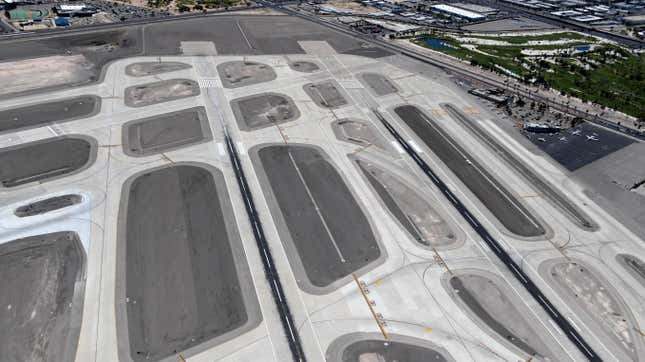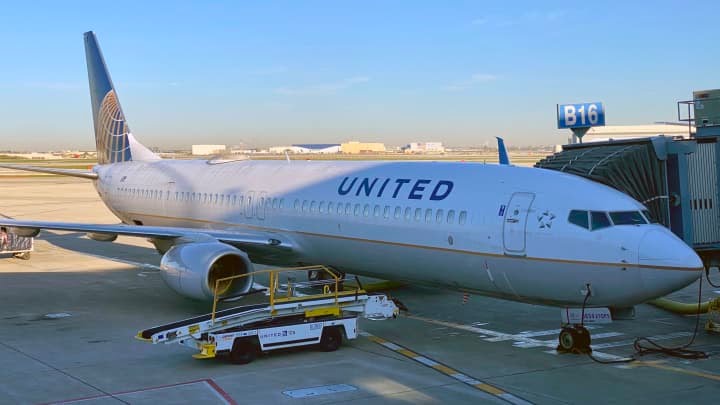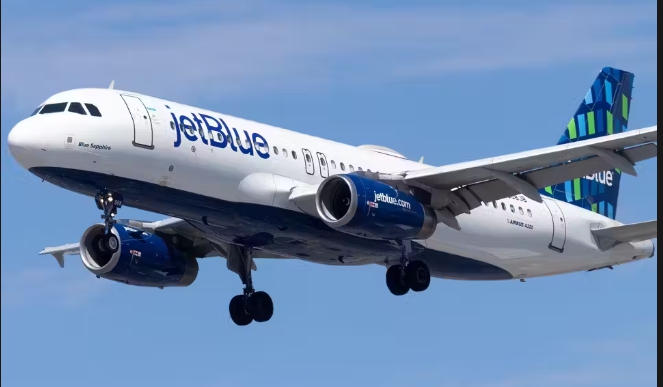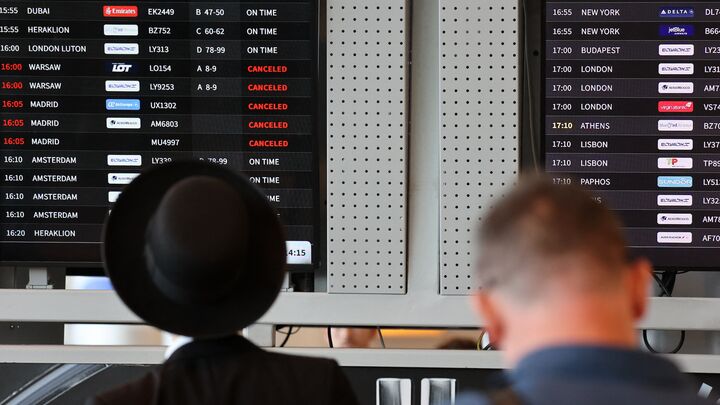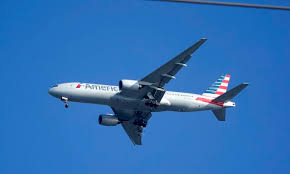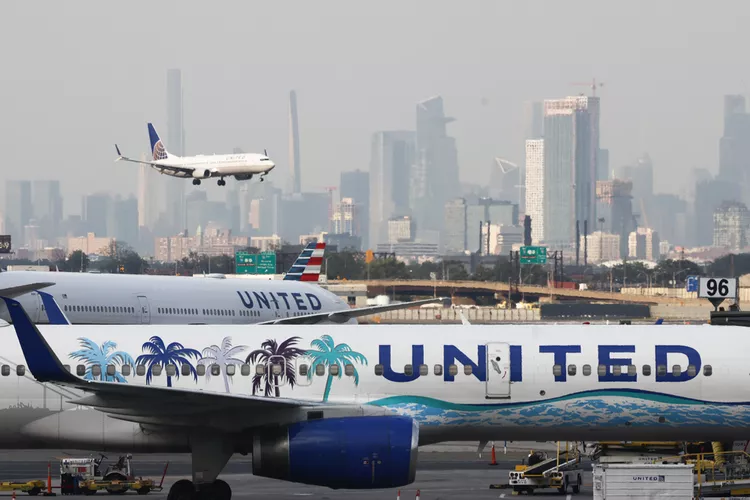It’s about to start getting harder to find a flight The industry’s ‘capacity’ problem is getting tougher to ignore
The skies are about to be a lot less busy than expected. After years of airlines adding supply to take advantage of a recovery to pre-COVID-19 levels, Deutsche Bank says that the industry is backpedaling.
This past week we observed one of the industry’s largest week-over-week capacity reductions as carriers removed almost a point of growth from December quarter schedules,” Michael Linenberg, an analyst at the bank covering airlines, wrote in a note to clients. He and his team analyzed flight schedules and noted that year-over-year growth in the number of expected “available seat miles” — space for one passenger to be flown one mile — fell nearly a full point to 4% from 4.8% for the last quarter of the year.
The skies are about to be a lot less busy than expected. After years of airlines adding supply to take advantage of a recovery to pre-COVID-19 levels, Deutsche Bank says that the industry is backpedaling.
This past week we observed one of the industry’s largest week-over-week capacity reductions as carriers removed almost a point of growth from December quarter schedules,” Michael Linenberg, an analyst at the bank covering airlines, wrote in a note to clients. He and his team analyzed flight schedules and noted that year-over-year growth in the number of expected “available seat miles” — space for one passenger to be flown one mile — fell nearly a full point to 4% from 4.8% for the last quarter of the year.
The skies are about to be a lot less busy than expected. After years of airlines adding supply to take advantage of a recovery to pre-COVID-19 levels, Deutsche Bank says that the industry is backpedaling.
This past week we observed one of the industry’s largest week-over-week capacity reductions as carriers removed almost a point of growth from December quarter schedules,” Michael Linenberg, an analyst at the bank covering airlines, wrote in a note to clients. He and his team analyzed flight schedules and noted that year-over-year growth in the number of expected “available seat miles” — space for one passenger to be flown one mile — fell nearly a full point to 4% from 4.8% for the last quarter of the year.
The skies are about to be a lot less busy than expected. After years of airlines adding supply to take advantage of a recovery to pre-COVID-19 levels, Deutsche Bank says that the industry is backpedaling.
This past week we observed one of the industry’s largest week-over-week capacity reductions as carriers removed almost a point of growth from December quarter schedules,” Michael Linenberg, an analyst at the bank covering airlines, wrote in a note to clients. He and his team analyzed flight schedules and noted that year-over-year growth in the number of expected “available seat miles” — space for one passenger to be flown one mile — fell nearly a full point to 4% from 4.8% for the last quarter of the year.
The skies are about to be a lot less busy than expected. After years of airlines adding supply to take advantage of a recovery to pre-COVID-19 levels, Deutsche Bank says that the industry is backpedaling.
This past week we observed one of the industry’s largest week-over-week capacity reductions as carriers removed almost a point of growth from December quarter schedules,” Michael Linenberg, an analyst at the bank covering airlines, wrote in a note to clients. He and his team analyzed flight schedules and noted that year-over-year growth in the number of expected “available seat miles” — space for one passenger to be flown one mile — fell nearly a full point to 4% from 4.8% for the last quarter of the year.
The skies are about to be a lot less busy than expected. After years of airlines adding supply to take advantage of a recovery to pre-COVID-19 levels, Deutsche Bank says that the industry is backpedaling.
This past week we observed one of the industry’s largest week-over-week capacity reductions as carriers removed almost a point of growth from December quarter schedules,” Michael Linenberg, an analyst at the bank covering airlines, wrote in a note to clients. He and his team analyzed flight schedules and noted that year-over-year growth in the number of expected “available seat miles” — space for one passenger to be flown one mile — fell nearly a full point to 4% from 4.8% for the last quarter of the year.
The skies are about to be a lot less busy than expected. After years of airlines adding supply to take advantage of a recovery to pre-COVID-19 levels, Deutsche Bank says that the industry is backpedaling.
This past week we observed one of the industry’s largest week-over-week capacity reductions as carriers removed almost a point of growth from December quarter schedules,” Michael Linenberg, an analyst at the bank covering airlines, wrote in a note to clients. He and his team analyzed flight schedules and noted that year-over-year growth in the number of expected “available seat miles” — space for one passenger to be flown one mile — fell nearly a full point to 4% from 4.8% for the last quarter of the year.
The skies are about to be a lot less busy than expected. After years of airlines adding supply to take advantage of a recovery to pre-COVID-19 levels, Deutsche Bank says that the industry is backpedaling.
This past week we observed one of the industry’s largest week-over-week capacity reductions as carriers removed almost a point of growth from December quarter schedules,” Michael Linenberg, an analyst at the bank covering airlines, wrote in a note to clients. He and his team analyzed flight schedules and noted that year-over-year growth in the number of expected “available seat miles” — space for one passenger to be flown one mile — fell nearly a full point to 4% from 4.8% for the last quarter of the year.
The skies are about to be a lot less busy than expected. After years of airlines adding supply to take advantage of a recovery to pre-COVID-19 levels, Deutsche Bank says that the industry is backpedaling.
This past week we observed one of the industry’s largest week-over-week capacity reductions as carriers removed almost a point of growth from December quarter schedules,” Michael Linenberg, an analyst at the bank covering airlines, wrote in a note to clients. He and his team analyzed flight schedules and noted that year-over-year growth in the number of expected “available seat miles” — space for one passenger to be flown one mile — fell nearly a full point to 4% from 4.8% for the last quarter of the year.
